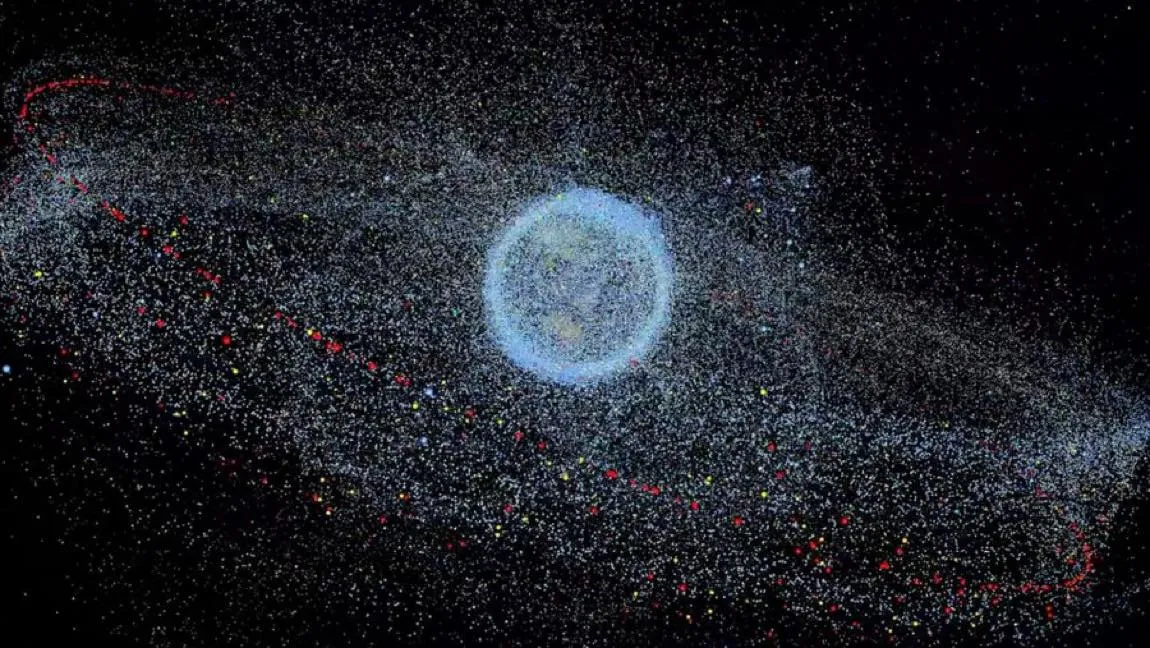Unseen Threat: Visualizing Earth's Ring of Space Debris
Have you ever wondered what our planet looks like with every known piece of space debris marked? The image often circulated, though not to scale, paints a startling picture of a planet seemingly engulfed in a cloud of human-made junk. While space is indeed vast, the reality of orbital debris is a pressing concern for space agencies and satellite operators worldwide.

The Alarming Numbers: A Cosmic Junkyard in Orbit
According to a comprehensive study by the European Space Agency (ESA) in 2019, our planet is encircled by an estimated 130 million pieces of space debris. These aren't just large, easily trackable objects; the vast majority are tiny fragments, each potentially a hazard.
Here's a breakdown of the estimated sizes and quantities:
- 1 meter or larger: Approximately 5,400 objects
- 10 centimeters or larger: Approximately 34,000 objects
- 1 centimeter or larger: Approximately 900,000 objects
- 1 millimeter or larger: A staggering 130,000,000 objects
Beyond these fragments, the ESA report also detailed the larger context of orbital activity:
- Total rocket launches since 1957: ~6,910
- Satellites launched into Earth orbit: ~21,620
- Satellites still in space: ~14,240
- Functioning satellites: ~11,500
- Tracked space objects: ~41,460
- Fragmentation events (break-ups, collisions): Over 650
- Total mass of all orbital objects: More than 14,000 tonnes
It's safe to assume these numbers have only climbed higher since 2019, given the accelerating pace of satellite deployments, particularly in Low Earth Orbit (LEO).
More Than Just "Junk": The Hidden Dangers
While the sheer numbers are daunting, the true threat of space debris lies in its velocity. Objects in orbit travel at incredible speeds—tens of thousands of kilometers per hour. Even a tiny 1-millimeter piece of debris can carry enough kinetic energy to seriously damage or even destroy a functioning satellite or spacecraft upon impact. Think of it not as a cloud of static junk, but as an orbital field of high-speed bullets.
This threat isn't theoretical. Satellite operators, like SpaceX with its Starlink constellation, regularly perform collision avoidance maneuvers. SpaceX reported tens of thousands of these maneuvers annually, with numbers doubling every six months in the years following their initial launches, purely to avoid debris. These maneuvers are not only costly and time-consuming but also consume valuable propellant, shortening the operational lifespan of satellites.
Dispelling Misconceptions: Space is Vast
The vivid image of Earth shrouded in debris, while effective for awareness, is highly misleading when it comes to scale. Space is incredibly, unfathomably vast. If every piece of man-made debris were collected, it would fit into a relatively small area on Earth. The problem isn't density in the way we might imagine on Earth; it's the sheer volume of space coupled with the unpredictable trajectories and extreme velocities of these objects. An accurate, to-scale representation of orbital debris would simply look like a normal photo of Earth – highlighting just how dispersed, yet dangerous, these objects are.
The Path Forward: Safeguarding Our Orbital Environment
The growing problem of space debris presents a significant challenge to the sustainability of space exploration and the critical satellite services we rely on daily. From communication and navigation to climate monitoring, our world is increasingly dependent on assets in orbit.
Addressing this issue requires a multi-faceted approach: stringent guidelines for future launches and satellite disposal, active debris removal technologies, and robust tracking systems. Understanding the true nature and scale of space debris, as highlighted by ESA's work, is the first critical step towards safeguarding our precious orbital environment for generations to come.




